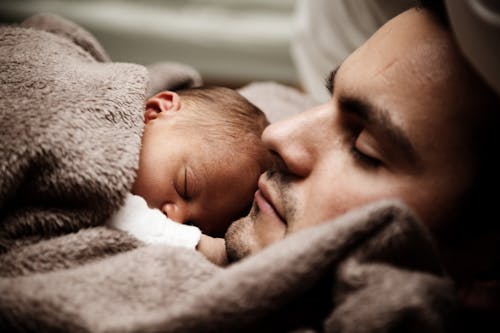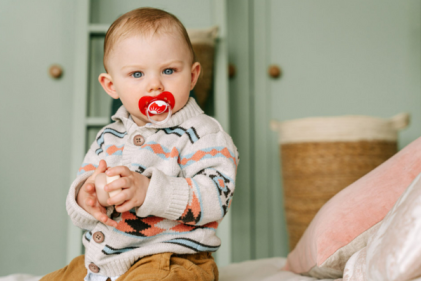You’ve heard the term baby-wearing and all the benefits of it, but did you know that this is also referred to as Kangaroo care and that there’s actual guidelines you can follow to ensure it’s as effective as possible?
Carrying baby in a sling close to your body has so many benefits, not just for baby but for you as well:
Skin-to-skin

Kangaroo care can increase your skin to skin contact with baby which has been linked to helping their development hugely in areas like growth and positive attachment. It is also very comforting for baby, as they can feel, see, smell and hear you more often and more easily. They also get to see a lot more of the world as they’re involved in the day-to-day aspects of your life, allowing them to stay close to you but also to explore.
Ease
As good as it is for baby, it’s also very handy for you and your partner. Your hands will be freer to attend to tasks while still getting your contact time in and your won’t have to lug heavy equipment everywhere you go. Buggies and pushchairs are bulky and awkward and can be a pain to drag around with you wherever you go.
Breastfeeding
This can also be a really handy way to breastfeed more subtly and effectively, as it gets baby comfortable on your chest and allow you more freedom to feed while on the go. Win win!
Something that’s really important to remember when trying Kangaroo care for the first time is the NHS’s TICKS advice to reduce the risk of suffocation: Keep your baby T ight, I n view, C lose enough to kiss, K eep their chin off their chest, with a S upported back.
Tucking them in tight is not only more comfortable for you both, but also stops them from tumbling down into the carrier which can hinder breathing. Having them in view and close enough to kiss ensures they’re facing upwards, keeping the fabric away from their face and airways. There should always be at least a finger between your baby’s chin and chest to keep airways unrestricted and the supported back means their tummy should be against you, curling their back in a natural position.
According to the NHS, carrying baby close in the early days regulates their temperature, breathing and oxygen levels, calms and soothes, aids their restful sleep, reduces pain and stress, lowers the risk of infection, promotes breastfeeding and usually means shorter stays in hospital.

Their tips and tricks for successful kangaroo care are:
Baby should be undressed to their nappy and placed between their mothers breasts or on their father's chest, in an upright position
Baby should be covered to keep them warm
Baby should have their head turned to one side in a slightly upturned position, to help them breathe easily and allow their parents to have eye contact with their baby
Baby's arms and legs should be flexed
Baby's tummy should be level with the parents sternum, so baby’s face is uncovered at all times
Baby should be secured to make sure they can’t slip out, with their parent sitting in a comfortable reclining chair or similar position
Kangaroo care should last for at least an hour, to be really effective
They recommend wearing some sort of loose or button up shirt, or something with a low neckline and stretchy fabric that will allow for movement and access easily. Bras can hinder the experience so if that’s something you’re comfortable with, try removing it for periods of time to allow baby to have more contact with your skin.
See the NHS for more information and resources.









